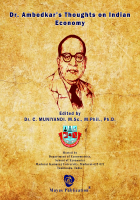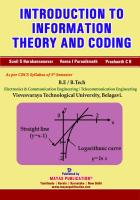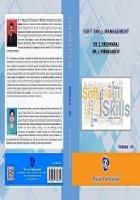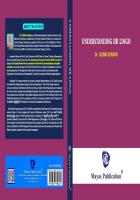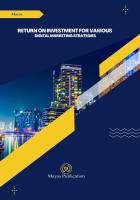
Emperor Journal of Civil Engineering
Supports open access
Guidelines for Author
As an international, peer-reviewed journal, it provides a platform for publication of the most advanced scientific research in Commerce and Management and so on. The Journal of Mayas Publication welcomes the original empirical investigations from the author(s) located worldwide.
Submission Checklist
Before submitting your manuscript, check its quality thoroughly one more time, and evaluate it critically could anything be done better?
We assured that:
The manuscript follows the Instructions for Authors.
All files are in the correct format and of the appropriate resolution or size.
The spelling and grammar are correct.
You have mentioned contact information for all authors.
You have written a persuasive cover letter.
You have read the Aims & Scope carefully and ensure that your manuscript falls within the scope for this journal.
Use the Microsoft Word template to prepare your manuscript;
Issues about publication ethics, research ethics, copyright, authorship, figure formats, data, and reference format have been considered appropriately.
What to Submit?
Heading forward from Traditional Publishing has its type of articles to be submitted and published. If you are planning to submit your article to Mayas Publication, please choose one of the suitable categories for your paper and summarize it within the proposed word limit before submission.
Primary Research (Word Limit 2000 – 3000) contributes to the base of scientific knowledge, including interdisciplinary, replication studies, and negative or null results. Download the Manuscript Template.
Systematic Reviews (Word Limit 3000 - 3500) whose methods ensure the comprehensive and unbiased sampling of existing literature. Download Detailed Guidelines.
Executive Summary (Word Limit 800 – 1000) includes a thorough overview of a research problem that provides key points for its readers, saving time and preparing them to understand the scientific approach. It must be written in such a summarized way that readers can rapidly become acquainted with a large set of data without needing the explanatory procedures—download detailed Guidelines to prepare your Executive Summary.
Short Communications (Word Limit 1000-1500) are short papers presenting original and significant material for rapid dissemination. For example, Short Communication may focus on a particular aspect of a problem or a new finding that is expected to have a significant impact. Short communication should be submitted the same way as a full-length paper. A maximum of 1500 words in the main text plus approximately ten references and normally no more than two illustrations (tables or figures or one of each). Short Communications should follow the same layout as a primary research paper.
Editorials (Word Limit 1000) are short, invited opinion pieces that discuss an issue of immediate importance to the research community. Editorials should have fewer than 1000 words total, no abstract, a minimal number of references (definitely no more than 5), and no figures or tables (although they do have a photograph of the author as an illustration).
Focus (Word Limit 2500) articles are short, timely pieces that spotlight either recent research findings or policy issues related to research (for example, regulatory, funding, educational, or legislative discussions). Focus articles should not exceed 2500 words total (including abstract, main text, references, and figure legend). They should have a short pithy title, a one-sentence abstract, no more than ten references, and one figure (with figure legend) or table.
Perspectives discuss one or a cluster of recently published papers or a current research topic of high interest in which an author's views shed an incisive light on key findings in research. These articles typically have one or two authors whose task is to inform our interdisciplinary readership about exciting scientific developments in the author's expertise area. Other appropriate topics include discussions of methods, books, or meeting highlights. Perspectives are usually between 4000 to 6000 words total (including abstract, main text, references, and figure legends). They should have a short pithy title, an abstract of 250 words or less, no more than 35 references, and figures as well as tables.
Commentaries (Word Limit 3000) present an in-depth analysis of current issues such as policy, funding, regulatory, educational, legislative issues, new institutes, careers, etc. Commentaries should not exceed 3000 words total (including abstract, main text, references, and figure legends). They should have a short pithy title, an abstract of 50 words or less, no more than 35 references, and one or two figures (with figure legends) or tables.
Industry News (Word Limit 250 – 400) short pieces present new information about initiatives, products, services, and developments in the field. These must not be promotional pieces about a product or service and should make suitable references to alternative systems, services, products, or initiatives to place the update in context.
Guidelines for Editor
Open Access
Mayas Publication is a peer-reviewed open access international journal(s) dedicated to publishing scientifically sound research work worldwide. It means that readers can access published material for free without paying a subscription charge. Articles published in Mayas Publication are freely available immediately after publication. This means that researchers, students, and interested laypeople from anywhere in the world have rapid access to the latest research through Mayas Publication. We finance publication through Article Processing Charges (APC), paid by the authors and their institutions. APCs cover the cost of managing the peer review process, professional copy-editing, and promotion of the published article; Mayas Publication has no other source of income. For authors, open access provides a potentially wider circle of readers for their research papers, with some research suggesting that open-access papers are more highly cited.
Editorial Offices
The in-house staff consists of Managing Editors, Assistant Editors, Production Editors, English Editors, copy editors, Data Specialists, Software Engineers, Web developers, and Administrative Specialists. Our collaborating editors on our Editorial Board are typically employed in academic institutions or corporate research facilities located worldwide. The contact with the in-house editorial staff is mainly by e-mail and telephone. Assistant Editors process manuscripts through the peer-review and production procedures; Managing Editors have the editorial responsibility for the journals; Production Editors, English Editors, Copy Editors, and Data Specialists are responsible for putting accepted content into a publishable format (full-text PDF, XML, and PHP versions).
Editorial Process, Peer Review, and Production
Articles submitted to Mayas Publication are subject to strict peer-reviewing. Mayas Publication operates a double-blind peer review (the reviewers do not know the authors' identities until the paper has been published). The online submission system of Mayas Publication; Registration incorporates online tools for manuscript submission, peer-reviewing, and editorial decision-making.
Once a manuscript is submitted, the in-house Managing Editor will receive the submission, and will subsequently coordinate the whole editorial process for the manuscript: peer review, decision-making, possible authors' revision, manuscript acceptance, copy editing, English editing, proofreading, and final publication. An in-house Academic Editor will be assigned to the submitted article and will send review invitations.
At least two reports per manuscript are collected for each manuscript—three if the first two differ substantially. Reviewers must hold a Ph.D., have not published with the authors in the previous five years, and have recent publication in the field of the submitted manuscript.
The Editor-in-Chief, Guest Editor, or a suitable editorial board member can make the final acceptance or rejection decision for a manuscript, usually after author revision. We typically allow only one round of major revisions.
After accepting an article for publication, the in-house editorial staff will organize the paper's production, which entails copy editing, English editing, and final production in preparation for publication on the journal website. Mayas Publication is structured in yearly volumes and quarterly issues. Nevertheless, after successful completion of proofreading, articles are published online at the end of every quarter.
Editor-In-Chief Responsibilities
The Editor-in-Chief is the head of the journal and is mainly responsible for the scientific quality of the journal. Mayas Publication does not need the Editor-in-Chief to be actively involved in the editorial process, i.e., the editorial team will take care of the majority of contact with authors and reviewers.
The Editor-in-Chief is responsible for assisting the Editorial Office in the management of the journal, which entails:
Scientific decisions about the journal's scope,
Inviting distinguished scientists to join the editorial board,
Suggesting topics for special issues,
Assisting the Guest Editors in the setup of special issues, He/She was overviewing the editorial process for individual manuscripts (mainly by making the final decision whether a paper can be published after peer-review and revisions).
The position of Editor-in-Chief is honorary. As a reward for his/her efforts, the Editor-in-Chief can publish his/her papers free of charge. The initial term of the Editor-in-Chief position is three years and can be renewed by the Managing Editor.
Editorial Board Member Responsibilities:
An Editorial Board member will be asked to review Seven or Eight manuscripts in a year and may help edit a special issue on a topic related to their research interests. Additionally, the Editorial Board members will be approached for input or feedback regarding new regulations relating to the journal from time to time. Editorial Board members are also encouraged to help to promote the journal among their peers or at conferences. The communication with Editorial Board members is done primarily by E-mail. The initial term for an Editorial Board membership is three years and can be renewed by the Managing Editor. An Editorial Board member may also step down from the position at any time if he or she feels overloaded by the requests from the journal's Editorial Office.
Guest Editor Responsibility / Guest Editing A Special Issue
We appreciate collaborations with scholars all over the world. Special issues are usually edited by a Guest Editor who invites colleagues from the same research field to contribute an article on a topic within their expertise. The Guest Editor works together with the Editorial Office to prepare a description and keywords for the special issue web page. We aim for at least ten articles published per special issue. Often, the Guest Editor will also write an editorial paper for the special issue. The Guest Editor usually makes decisions on accepting manuscripts submitted to their special issue (depending on the journal's policy – insome cases, they may make a recommendation to the Editor-in-Chief). Papers belonging to a special issue are published online in the journal immediately after acceptance and collected together on the special issue webpage. This means that there is no delay for authors who submit their work: it will appear shortly after approval, even if other papers in the special issue are still being processed.
Guest Editors should not hold conflicts of interest with authors whose work they are assessing, e.e.g., if they are from the same institution or collaborate closely. In this case, the Editor-in-Chief or a suitable editorial board member will make final acceptance decisions for submitted papers.
Guidelines for Reviewer
Mayas Publication is sincerely grateful to scholars who give their time to peer-review the submitted articles. Rigorous peer review is the cornerstone of high-quality academic publishing.
Benefits
Peer review is an essential part of the publication process, ensuring that the Journal of Mayas Publication maintains high-quality published papers standards. Reviewing is often an unseen and unrewarded task. We are striving to recognize the efforts of reviewers.
Common Benefits to be a Peer-reviewer:
Reviewing unpublished papers gives you a preview of the most recent research, so it helps you keep up with the rapidly expanding scholarship in your field of expertise.
The task of reading and offering critical comments provides a valuable experience that can be applied to your writing and that of your students and colleagues to encourage improvements.
Doing a thorough and penetrating job as a reviewer means lending a helping hand to a busy journal editor, and there is no doubt that it will be appreciated and remembered.
Offering constructive and supportive criticism helps authors like yourself with their efforts to improve their research, writing, and chances of successfully sharing their work through publication. They may not know who you are, but most of them will be grateful for the assistance, even if it takes a while for them to feel that way.
By working to validate, question, and improve the research published in your field, you perform a valuable service for readers of the journal and your scholarly community as a whole.
By evaluating and recommending for publication papers reporting valid and significant research, you will support and encourage excellent research and promote and inspire the advancement of knowledge in your field.
Reviewing also enables you to catch and prevent instances of plagiarism, intellectual misconduct, and unethical publication and research practices.
Your reviews will enable the editor to make the best publishing choices, keeping poor scholarship to a minimum and ensuring that essential stages in the development of knowledge are published. The articles that result may even increase the number of readers and citations the journal earns.
Acting as a peer reviewer for a reputable scholarly journal is beneficial to your career and can make a significant difference when it comes to employment, promotions, research and funding opportunities, and even your publication plans.
By taking an active part in your scholarly community through peer review, you make new connections and become part of a research network that is likely to prove valuable and pleasurable throughout your career.
If you do an excellent job when reviewing papers for a journal, you may be rewarded with a position on an editorial or advisory board, or you may even become an associate or chief editor for the journal, where you will be able to contribute to knowledge in your field in new ways.
When Reviewing for Mayas Publication:
The reviewer will receive a personalized reviewer certificate.
Will be included in the journal’s annual acknowledgment of reviewers.
Will be considered for the journal’s outstanding reviewer award.
Finally, Mayas Publication will waive or reduce publication fees if authors are willing to review papers by other scholars, so reviewing might save you a little money as well.
Invitation to Join Volunteer Reviewer Database:
If you are interested in reviewing articles for Mayas Publication, please register your details online or by mail.
The Managing Editor of the publication will send you a notification once your profile has been approved.
Invitation to Review
At least two experts review manuscripts submitted to Mayas Publication. Reviewers are asked to evaluate the quality of the manuscript and to provide a recommendation to the external editor on whether a manuscript can be accepted, requires revisions, or should be rejected.
We Ask Invited Reviewers To:
Accept or decline any invitations quickly, based on the manuscript title and abstract;
Suggest alternative reviewers if an invitation must be declined;
Request an extension in case more time is required to compose a report.
As part of the assessment, reviewers will be asked to:
Rate the originality, significance, quality of the presentation, scientific soundness, interest to the readers, overall merit, and English level of the manuscript;
Provide an overall recommendation for the publication of the manuscript;
Provide a detailed and constructive review report;
Potential Conflicts of Interests
We ask reviewers to inform the journal editor if they hold a conflict of interest that may prejudice the review report positively or negatively. The editorial office will check as far as possible before the invitation. However, we appreciate the cooperation of the reviewers in this matter. Reviewers who are invited to assess a manuscript they previously reviewed for another journal should not consider this as a conflict of interest in itself. In this case, reviewers should feel free to let us know if the manuscript has been improved or not compared to the previous version.
Confidentiality and Anonymity
Reviewers should keep the content of the manuscript, including the abstract, confidential. Reviewers must inform the Editorial Office if they would like a student or colleague to complete the review on their behalf.
Mayas Publication operates single- or double-blind peer review. Reviewers should be careful and not reveal their identity to the authors, either in their comments or in metadata for reports submitted in Microsoft Word or PDF format.
Timely Review Reports
Mayas Publication aims to provide an efficient and high-quality publishing service to authors and the scientific community. We ask reviewers to assist by providing review reports promptly. Please contact the editorial office if you require an extension to the review deadline.
Peer-Review and Editorial Procedure
All manuscripts sent for publication in our journals are strictly and thoroughly peer-reviewed by experts (including research and review articles, spontaneous submissions, and invited papers). The Managing Editor of the publication/journal will perform an initial check of the manuscript's suitability upon receipt. The Editorial Office will then organize the peer-review process performed by independent experts and collect at least two review reports per manuscript. We ask our authors for adequate revisions (with the second round of peer-review, if necessary) before a final decision is made. The academic editor made the final decision (usually the Editor-in-Chief of the concerned journal or the Guest Editor of a Special Issue). Accepted articles are copy-edited and English-edited by the specialist.
Rating the Manuscript
Please rate the following aspects of the manuscript:
Originality/Novelty: Is the question original and well-defined? Do the results provide an advance in current knowledge?
Significance: Are the results interpreted appropriately? Are they significant? Are all conclusions justified and supported by the results? Are hypotheses and speculations carefully identified as such?
Quality of Presentation: Is the article written properly? Are the data and analyses presented appropriately? Are the highest standards for presentation of the results used?
Scientific Soundness: is the study correctly designed and technically sound? Are the analyses performed with the highest technical standards? Are the data robust enough to conclude? Are the methods, tools, software, and reagents described with sufficient details to allow another researcher to reproduce the results?
Interest to the Readers: Are the conclusions interesting for the readership of the Journal? Will the paper attract a wide readership or be of interest only to a limited number of people?
Overall Merit: Is there an overall benefit to publishing this work? Does the work provide an advance towards the current knowledge? Have the authors addressed an important long-standing question with clever experiments?
English Level: Is the English language appropriate and understandable?
Manuscripts submitted to the concerned journal of Mayas Publication should meet the highest standards of publication ethics:
Manuscripts should only report results that have not been submitted or published before, even in part.
Manuscripts must be original and should not be text from another source without appropriate citation.
For biological studies, the studies reported should have been carried out by generally accepted ethical research standards.
If reviewers become aware of such scientific misconduct or fraud, plagiarism, or any other unethical behavior related to the manuscript, they should raise these concerns with the in-house editor immediately.
Overall Recommendation
Please provide an overall recommendation for the publication of the manuscript as follows:
Accept in Present Form: The paper is accepted without any further changes.
Accept after Minor Revisions: The paper is in principle accepted after revision based on the reviewer's comments. Five days have been given to the author(s) for minor revisions.
Reconsider after Major Revisions: The acceptance of the manuscript would depend on the revisions. The author needs to provide a point-by-point response or provide a rebuttal if some of the reviewer's comments cannot be revised. Usually, only one round of major revisions is allowed. Authors will be asked to resubmit the revised paper within ten days, and the revised version will be returned to the reviewer for further comments.
Reject: The article has serious flaws, makes no original contribution, and the paper is rejected with no offer of resubmission to the journal.
Review Report
Review reports should contain:
A summary (one short paragraph) outlining the aim of the paper and its main contributions.
Broad comments highlighting areas of strength and weakness. These comments should be specific enough for authors to be able to respond.
Specific comments refer to line numbers, tables, or figures. Reviewers need not comment on formatting issues that do not obscure the meaning of the paper, as editors will address these.
Note that Mayas Publication follows several standards and guidelines, including those from the ICMJE (medical journals), CONSORT (trial reporting), TOP (data transparency and openness), PRISMA (systematic reviews and meta-analyses), and ARRIVE (reporting of in vivo experiments). Reviewers familiar with the guidelines should report any concerns they have about their implementation.
Your comments should not include an indication of whether you think the article should be accepted for publication. For further guidance on writing a critical review, please refer to the following documents:
COPE Ethical Guidelines for Peer Reviewers. Committee on Publication Ethics. Available online
Hames, I. Peer Review and Manuscript Management in Scientific Journals: Guidelines for Good Practice. Wiley-Blackwell: Oxford, UK, 2007.
Writing a journal article review. Australian National University: Canberra, Australia, 2010. Available online
Golash-Boza, T. How to write a peer review for an academic journal: Six steps from start to finish. Available online
Editorial Process
Peer Review Process
All types of contributions to Mayas Publication, except editorials, are peer-reviewed. The peer-review process focuses on whether the work is done to high scientific and ethical standards and is appropriately described, and that the data support the conclusions. The role of peer review is considered to be helping authors improve their manuscripts rather than deciding whether they should be published. The editor makes the final decision.
Mayas Publication aims to provide authors with professional, fair, timely, and confidential peer reviews by the field experts. The review consists of the following steps:
Step 1: Initial Screening
After a paper is submitted to a journal, the Managing Editor will screen the manuscript and decide whether or not to send it for full peer review. This is to ensure adherence to our policies, including the statement of competing interests, ethical requirements for studies involving human participants or animals, as well as the unacceptably low standard language. For example, the editor will ask:
Does the manuscript fit the journal's scope, and will it be of interest to the readership?
Is the manuscript of acceptable quality?
Is the writing good enough to make it worth reviewing?
Is the manuscript compliant with the journal's instructions for authors?
The author(s) may be asked for the revision. Only after clearing the initial screening is the manuscript sent to peer reviewers. Manuscripts may be declined by the Managing Editor, without a full review, (or) being asked for a revision, if they are inconsistent with our Editorial Guidelines' decision.
Step 2: Review
The Managing Editor assigns manuscripts to one of the Editorial Board Members and two to four reviewers. External referees are consulted when additional expertise is required. All reviewers are working scientists and therefore are in the best position to judge the work's quality and importance. All board members and referees who review a manuscript remain unknown to the authors. The editors and reviewers treat every manuscript as privileged information, and they are instructed to exclude themselves from the review of any manuscript that might involve a conflict of interest. The reviewers recommend accepting, revising, or declining a paper based on the scientific merit and technical quality of the studies reported.
Step 3: Decision
Editors have the option of accepting, recommending modification, recommending additional external review, or rejecting. If the decision is Minor Revision or Major Revision, the authors have 15 days to resubmit a revised manuscript. Upon resubmission, the academic editor may choose to return the manuscript to the reviewers or render a decision based on his/her expertise. Mayas Publication aims to provide authors with an initial decision within 2-3 months. After acceptance, manuscripts are published online at the end of every month 25th after proofreading.
Step 4: Proof Reading
You can annotate and add comments in a Word document. If, for any reason, this is not possible, mark the corrections and any other comments on a printout of your proof and return it by scanning the pages and email to mayaspublication@gmail.com. Please use this proof only for checking the typesetting, editing, completeness, and correctness of the text, tables, and figures. Significant changes to the article as accepted for publication will be considered at this stage only with permission from the editor. We will do everything possible to get your article published quickly and accurately; please reply with your corrections within 24 hours. Proofreading is solely your responsibility.
Note that Mayas Publication may proceed with the publication of your article, with no further editing, if no response is received.
Step 5: Complaint Policy
If you wish to appeal a decision, you should email the editor who handled the whole submission inquiry and review process, explaining in detail your reasons for any complaints or the appeal. The email should be sent to mayaspublication@gmail.com. Appeals will only be considered when a reviewer or editor is thought to have a significant error or bias or when the objectivity is compromised by a documented competing interest. Either of these reasons would change the original decision. All appeals will be discussed with another editor, with a total number of three editors involved. The majority rule will be applied. The processing of appeals will usually take no longer than two weeks. While under appeal, a manuscript remains under formal consideration and should not be submitted for consideration elsewhere. We do not consider second appeals.

